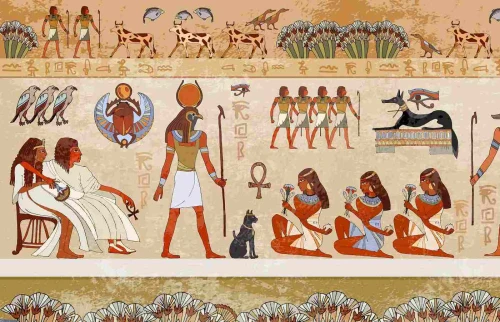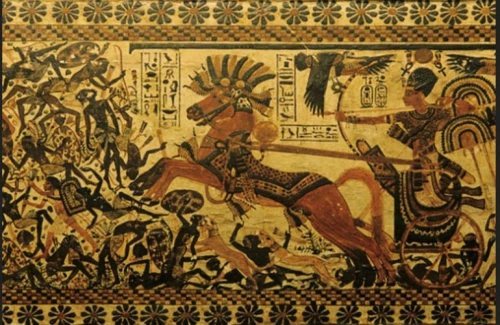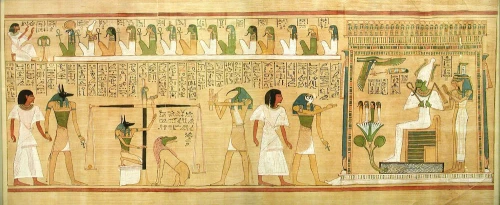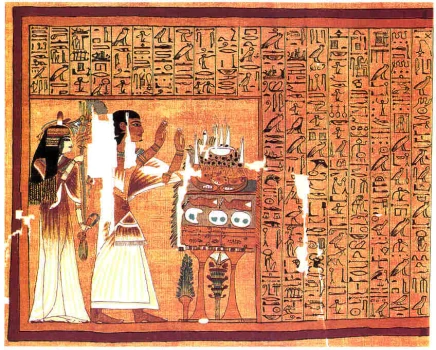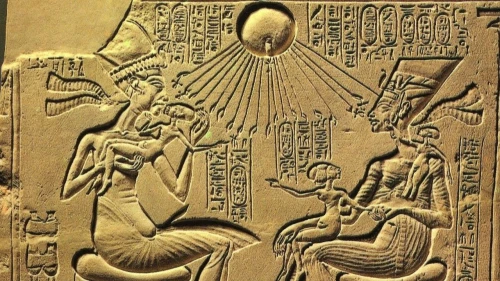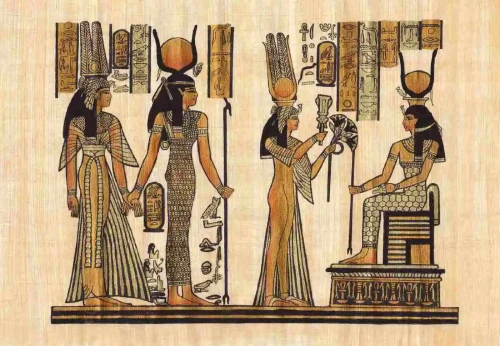
The last ruler of ancient Egypt and the living embodiment of Isis. Cleopatra is one of the most famous names in history. She was the seventh Cleopatra in her family. She was born in Alexandria in the winter of 69-68 B.C History does not record the name of her mother or the exact date of her birth, but Cleopatra's father was Ptolemy XII and her family, known as the Ptolemies, had ruled Egypt for 300 years. The Ptolemies were Greek rulers descended from General Ptolemy, who took control of Egypt when Alexander the Great died in 323 B.C. For the most part, the later Ptolemies were corrupt, lazy rulers who cared little for Egypt other than the amount they could collect in taxes.
Cleopatra was different; she loved the land and was determined to restore Egypt to its former glory. As was the custom of Ptolemaic queens, Cleopatra assumed the role of the Living Isis and officiated at ceremonies in the temple of Isis wearing the sacred costume of the goddess. By all accounts, Cleopatra was the brightest and most clever member of her family; ancient sources say she was not beautiful, but she had a captivating personality. She spoke several languages and charmed everyone who met her. Eager to learn and curious about everything, Cleopatra frequently summoned scholars from the museum to answer her questions and often visited the famous Alexandrian library, which held thousands of books written on papyrus.
When Cleopatra was 17, her father, Ptolemy XII, died, and she expected to succeed him on the throne. However, her father had written in his will that she was required to marry her 10-year-old brother, Ptolemy XIII (whom she detested) and that they should rule Egypt together. Marriage between brothers and sisters was quite common in Egyptian royal families to keep the power in the family, but the union of Cleopatra and her brother was doomed to failure. Cleopatra was drawn into a palace intrigue and had to flee for her life. Shortly afterward, Julius Caesar, the Roman general, arrived in Egypt to settle the differences between Cleopatra and her brother. To meet Caesar without being intercepted by forces loyal to her brother, Cleopatra was rolled up inside a carpet that was delivered to Caesar as a gift. When the carpet was unrolled, Cleopatra appeared and pleaded her case to Caesar, who agreed to support her claim to the throne.
By all accounts, Cleopatra was intelligent, witty, and determined. It was a winning combination, for she charmed the sophisticated Roman general, and Caesar stayed on in Egypt to be near Cleopatra. Caesar later murder in the Roman Senate pushed Rome to the brink of civil war and dashed Cleopatra dreams of power.
Mark Antony, Caesar's loyal friend and general, became Cleopatra strongest ally. History recorded their love affair and extravagant lifestyle, as Cleopatra again made plans to rule the Roman Empire, this time with Mark Antony. Her dreams of power were never fulfilled, and the fateful sea battle fought at Actium in 31 B.C. between Cleopatra and Antony Egyptian ships and the Roman fleet marked the beginning of Cleopatra decline. As the Roman troops led by Octavian, Caesar's legal heir entered Alexandria; Antony fell upon his sword and died in Cleopatra arms. Her two handmaidens, Iras, and Charmian, then dressed their queen in her royal regalia. Legend has it that Cleopatra died from the bite of an asp buried in a basket of figs.
 English
English
 Spain
Spain




